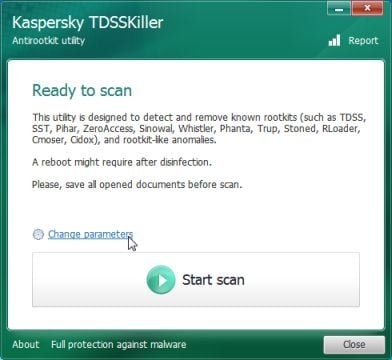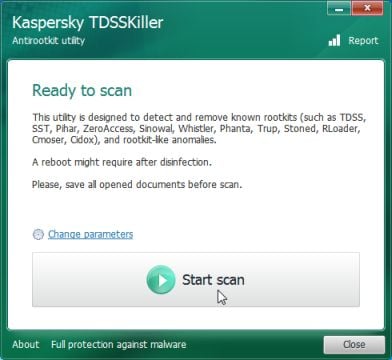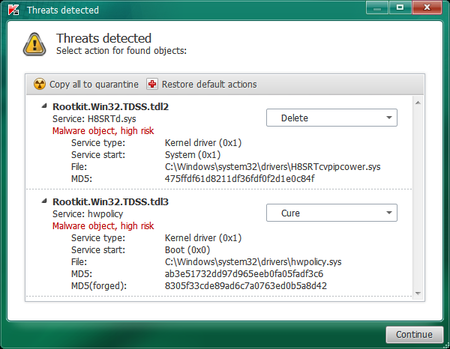If you have been alerted by Norton Antivirus or Norton Internet Security about a Suspicious.Cloud.7.EP, then your computer might be infected with a trojan horse, adware or another piece of malware.
Suspicious.Cloud.7.EP is the generic name for an unknown piece of malware, that is generated by Norton Antivirus or Norton Internet Security heuristic engine.
![Suspicious.Cloud.7.EP detected by Norton Antivirus [Image: Suspicious.Cloud.7.EP detected by Norton Antivirus]](http://malwaretips.com/blogs/wp-content/uploads/2013/07/Suspicious-Cloud-7-EP-Norton-Antivirus.jpg)
![Suspicious.Cloud.7.EP detected by Norton Internet Security [Image: Suspicious.Cloud.7.EP detected by Norton Internet Security]](http://malwaretips.com/blogs/wp-content/uploads/2013/07/Suspicious-Cloud-7-EP-Norton-Internet-Security.jpg)
The Suspicious.Cloud.7.EP is a dangerous threat that has been circulating for several years. In the time that Suspicious.Cloud.7.EP has been in the wild there have been a number of revisions, with modifications to its functionality, infection strategy and its persistence mechanisms on an infected machine. However, the core purpose has remained: to assume full control of the machine by adding it to the ZeroAccess botnet and to monetize the new asset by downloading additional malware.
Primarily, Suspicious.Cloud.7.EP is a kernel-mode rootkit, similar in ethos to the TDL family of rootkits. It uses advanced techniques to hide its presence, is capable of functioning on both 32 and 64-bit flavors of Windows from a single installer, contains aggressive self defense functionality and acts as a sophisticated delivery platform for other malware.
The Suspicious.Cloud.7.EP virus is distributed through several means. Malicious websites, or legitimate websites that have been hacked, can infect your machine through exploit kits that use vulnerabilities on your computer to install this Trojan without your permission of knowledge.
Another method used to propagate this type of malware is spam email containing infected attachments or links to malicious websites. Cyber-criminals spam out an email, with forged header information, tricking you into believing that it is from a shipping company like DHL or FedEx. The email tells you that they tried to deliver a package to you, but failed for some reason. Sometimes the emails claim to be notifications of a shipment you have made. Either way, you can’t resist being curious as to what the email is referring to – and open the attached file (or click on a link embedded inside the email). And with that, your computer is infected with the Suspicious.Cloud.7.EP virus.
The threat may also be downloaded manually by tricking the user into thinking they are installing a useful piece of software, for instance a bogus update for Adobe Flash Player or another piece of software.
The Suspicious.Cloud.7.EP virus is also prevalent on peer-to-peer file sharing websites and is often packaged with pirated or illegally acquired software.
When the computer is infected with the Suspicious.Cloud.7.EP virus, depending what infection is present on your machine, your browser may get redirect to affiliate web pages, you may see pop-up ads or other similar behavior.
Because Suspicious.Cloud.7.EP is a heuristic detection, this infection might be just a false positive detection from Norton Antivirus heuristic engine. Nevertheless, if Norton has detected a Suspicious.Cloud.7.EP infection on your machine, we recommend you perform the below removal guide, just to be on the safe side.
Suspicious.Cloud.7.EP is a dangerous threat that uses advanced stealth techniques in order to hinder its detection and removal.
Suspicious.Cloud.7.EP – Virus Removal Guide
This page is a comprehensive guide, which will remove the Suspicious.Cloud.7.EP infection from your your computer. Please perform all the steps in the correct order. If you have any questions or doubt at any point, STOP and ask for our assistance.
STEP 1: Remove Suspicious.Cloud.7.EP infection with Kaspersky TDSSKiller
STEP 2: STEP 3 : Remove Suspicious.Cloud.7.EP malicious files with RogueKiller
STEP 3: Remove Suspicious.Cloud.7.EP virus with Malwarebytes Anti-Malware Free
STEP 4: Remove the Suspicious.Cloud.7.EP infection with HitmanPro
STEP 5: Remove Suspicious.Cloud.7.EP redirect with AdwCleaner and Junkware Removal Tool
STEP 6: Double check for the Suspicious.Cloud.7.EP infections with ESET Online Scanner and Emsisoft Emergency Kit
STEP 1: Remove Suspicious.Cloud.7.EP infection with Kaspersky TDSSKiller
As part of its self defense mechanism, Suspicious.Cloud.7.EP will install a rootkit on the infected computer.In this first step, we will run a system scan with Kaspersky TDSSKiller to remove this rookit.
- Please download the latest official version of Kaspersky TDSSKiller.
KASPERSKY TDSSKILLER DOWNLOAD LINK(This link will automatically download Kaspersky TDSSKiller on your computer.) - Before you can run Kaspersky TDSSKiller, you first need to rename it so that
you can get it to run. To do this, right-click on the TDSSKiller.exe icon and select Rename.
Edit the name of the file from TDSSKiller.exe to iexplore.exe, and then double-click on it to launch. - Kaspersky TDSSKiller will now start and display the welcome screen and we will need to click on Change Parameters.

- In the new open window,we will need to enable Detect TDLFS file system, then click on OK.

- Next,we will need to start a scan with Kaspersky, so you’ll need to press the Start Scan button.

- Kaspersky TDSSKiller will now scan your computer for Suspicious.Cloud.7.EP infection.

- When the scan has finished it will display a result screen stating whether or not the infection was found on your computer. If it was found it will display a screen similar to the one below.

- To remove the infection simply click on the Continue button and TDSSKiller will attempt to clean the infection.A reboot will be require to completely remove any infection from your system.
STEP 2: Remove Suspicious.Cloud.7.EP malicious files with RogueKiller
Suspicious.Cloud.7.EP has added some malicious registry keys to your Windows installation, to remove them we will need to perform a scan with RogueKiller.
- You can download RogueKiller from the below link.
ROGUEKILLER DOWNLOAD LINK (This link will automatically download RogueKiller on your computer) - Double click on RogueKiller.exe to start this utility and then wait for the Prescan to complete.This should take only a few seconds and then you can click the Start button to perform a system scan.
![Click on the Start button to perform a system scan [Image: RogueKiller while scanning]](data:image/gif;base64,R0lGODlhAQABAAAAACH5BAEKAAEALAAAAAABAAEAAAICTAEAOw==)
- After the scan has completed, press the Delete button to remove any malicious registry keys.
![Press Delete to remove the malicious registry keys [Image: RogueKiller removing Suspicious.Cloud.7.EP]](data:image/gif;base64,R0lGODlhAQABAAAAACH5BAEKAAEALAAAAAABAAEAAAICTAEAOw==)
STEP 3: Remove Suspicious.Cloud.7.EP virus with Malwarebytes Anti-Malware Free
Malwarebytes Anti-Malware Free is a powerful on-demand scanner which will remove Suspicious.Cloud.7.EP malicious files from your computer.
- You can download Malwarebytes Anti-Malware Free from the below link, then double-click on the icon named mbam-setup.exe to install this program.
MALWAREBYTES ANTI-MALWARE DOWNLOAD LINK(This link will open a download page in a new window from where you can download Malwarebytes Anti-Malware Free) - When the installation begins, keep following the prompts in order to continue with the setup process, then at the last screen click on the Finish button.
![Malwarebytes Anti-Malware installation screen [Image: Malwarebytes Anti-Malware final installation screen]](data:image/gif;base64,R0lGODlhAQABAAAAACH5BAEKAAEALAAAAAABAAEAAAICTAEAOw==)
- On the Scanner tab, select Perform quick scan, and then click on the Scan button to start searching for the Suspicious.Cloud.7.EP malicious files.
![Run a Quick Scan with Malwarebytes Anti-Malware [Image: Malwarebytes Anti-Malware Quick Scan]](data:image/gif;base64,R0lGODlhAQABAAAAACH5BAEKAAEALAAAAAABAAEAAAICTAEAOw==)
- Malwarebytes’ Anti-Malware will now start scanning your computer for Suspicious.Cloud.7.EP virus as shown below.

- When the Malwarebytes Anti-Malware scan has finished, click on the Show Results button.
![Malwarebytes when the system scan has completed [Image: Malwarebytes Anti-Malware scan results]](data:image/gif;base64,R0lGODlhAQABAAAAACH5BAEKAAEALAAAAAABAAEAAAICTAEAOw==)
- You will now be presented with a screen showing you the computer infections that Malwarebytes Anti-Malware has detected. Make sure that everything is Checked (ticked), then click on the Remove Selected button.

- Once your computer will restart, open Malwarebytes Anti-Malware and perform a Full System scan to verify that there are no remaining threats.
STEP 4: Remove the Suspicious.Cloud.7.EP infection with HitmanPro
HitmanPro is a cloud on-demand scanner, which will scan your computer with 5 antivirus engines for the Suspicious.Cloud.7.EP virus and was deleted” infection.
- Download HitmanPro from the below link, then double-click on it to start this program.
HITMANPRO DOWNLOAD LINK (This link will open a new web page from where you can download HitmanPro) - HitmanPro will start and you’ll need to follow the prompts (by clicking on the Next button) to start a system scan with this program.

- HitmanPro will start scanning your computer for Suspicious.Cloud.7.EP malicious files as seen in the image below.

- Once the scan is complete,you’ll see a screen which will display all the infected files that this utility has detected, and you’ll need to click on Next to remove this malicious files.

- Click Activate free license to start the free 30 days trial and remove all the malicious files from your computer.

STEP 5: Remove Suspicious.Cloud.7.EP redirect with AdwCleaner and Junkware Removal Tool
Remove Suspicious.Cloud.7.EP adware with AdwCleaner
The AdwCleaner utility will scan your computer for Suspicious.Cloud.7.EP malicious files and registry keys, that may have been installed on your computer without your knowledge.
- You can download AdwCleaner utility from the below link.
ADWCLEANER DOWNLOAD LINK (This link will automatically download AdwCleaner on your computer) - Before starting AdwCleaner, close all open programs and internet browsers, then double-click on the AdwCleaner icon.
![AdwCleaner Icon [Image: AdwCleaner Icon]](data:image/gif;base64,R0lGODlhAQABAAAAACH5BAEKAAEALAAAAAABAAEAAAICTAEAOw==)
If Windows prompts you as to whether or not you wish to run AdwCleaner, please allow it to run. - When the AdwCleaner program will open, click on the Search button as shown below.
![Click on Search to scan for Suspicious.Cloud.7.EP [Image: AdwCleaner scanning for Suspicious.Cloud.7.EP]](data:image/gif;base64,R0lGODlhAQABAAAAACH5BAEKAAEALAAAAAABAAEAAAICTAEAOw==)
The program will now start to search for Suspicious.Cloud.7.EP malicious files that may be installed on your computer. When it has finished it will display a notepad screen that contains a log file of all the Mediaget extensions, files, and registry keys that have been detected. - To remove the Suspicious.Cloud.7.EP malicious files that were detected in the previous step, please click on the Delete button on the AdwCleaner screen.
![Click on Delete to remove Suspicious.Cloud.7.EP virus [Image: Adwcleaner removing Suspicious.Cloud.7.EP]](data:image/gif;base64,R0lGODlhAQABAAAAACH5BAEKAAEALAAAAAABAAEAAAICTAEAOw==)
AdwCleaner will now prompt you to save any open files or data as the program will need to reboot the computer. Please do so and then click on the OK button.
Remove Suspicious.Cloud.7.EP browser hijacker with Junkware Removal Tool
Junkware Removal Tool is a powerful utility, which will remove Suspicious.Cloud.7.EP virus from Internet Explorer, Firefox or Google Chrome.
- You can download the Junkware Removal Tool utility from the below link:
JUNKWARE REMOVAL TOOL DOWNLOAD LINK (This link will automatically download the Junkware Removal Tool utility on your computer) - Once Junkware Removal Tool has finished downloading, please double-click on the JRT.exe icon as seen below.
![Double-click on the Junkware Removal Tool utility [Image: Junkware Removal Tool]](data:image/gif;base64,R0lGODlhAQABAAAAACH5BAEKAAEALAAAAAABAAEAAAICTAEAOw==)
If Windows prompts you as to whether or not you wish to run Junkware Removal Tool, please allow it to run. - Junkware Removal Tool will now start, and at the Command Prompt, you’ll need to press any key to perform a scan for the Suspicious.Cloud.7.EP.
![Junkware Removal Tool scanning for Suspicious.Cloud.7.EP [Image: Junkware Removal Tool scanning for Suspicious.Cloud.7.EP virus]](data:image/gif;base64,R0lGODlhAQABAAAAACH5BAEKAAEALAAAAAABAAEAAAICTAEAOw==)
Please be patient as this can take a while to complete (up to 10 minutes) depending on your system’s specifications. - When the scan Junkware Removal Tool will be completed, this utility will display a log with the malicious files and registry keys that were removed from your computer.
![Junkware Removal Tool final log [Image: Junkware Removal Tool final log]](data:image/gif;base64,R0lGODlhAQABAAAAACH5BAEKAAEALAAAAAABAAEAAAICTAEAOw==)
STEP 6: Double check for the Suspicious.Cloud.7.EP infections with ESET Online Scanner and Emsisoft Emergency Kit
Remove Suspicious.Cloud.7.EP virus with ESET Online Scanner
- Download ESET Online Scanner utility.
ESET Online Scanner Download Link (This link will automatically download ESET Online Scanner on your computer.) - Double click on the Eset installer program (esetsmartinstaller_enu.exe).
- Check Yes, I accept the Terms of Use
- Click the Start button.
- Check Scan archives
- Push the Start button.
- ESET will then download updates for itself, install itself, and begin scanning your computer. Please be patient as this can take some time.
- When the scan completes, push Finish
Remove Suspicious.Cloud.7.EP infection with Emsisoft Emergency Kit
- You can download Emsisoft Emergency Kit from the below link.
EMSISOFT EMERGENCY KIT DOWNLOAD LINK (This link will open a download page in a new window from where you can download Emsisoft Emergency Kit) - After the download process will finish , you’ll need to unpack EmsisoftEmergencyKit.zip and then double click on EmergencyKitScanner.bat
- A pop-up will prompt you to update Emsisoft Emergency Kit , please click the “Yes” button.After the Update process has completed , put the mouse cursor over the “Menu” tab on the left and click-on “Scan PC“.
- Select Smart scan and click-on the below SCAN button.When the scan will be completed , you will be presented with a screen showing you the malware infections that Emsisoft Emergency Kit has detected.Make sure that everything is Checked (ticked) and click on the ‘Quarantine selected objects‘ button.






![Click on the Start button to perform a system scan [Image: RogueKiller while scanning]](http://malwaretips.com/blogs/wp-content/uploads/2012/04/roguek-1.png)
![Press Delete to remove the malicious registry keys [Image: RogueKiller removing Suspicious.Cloud.7.EP]](http://malwaretips.com/blogs/wp-content/uploads/2012/04/roguek-2.png)
![Malwarebytes Anti-Malware installation screen [Image: Malwarebytes Anti-Malware final installation screen]](http://malwaretips.com/blogs/wp-content/uploads/2013/01/malwarebytes-installation.jpg)
![Run a Quick Scan with Malwarebytes Anti-Malware [Image: Malwarebytes Anti-Malware Quick Scan]](http://malwaretips.com/blogs/wp-content/uploads/2013/01/malwarebytes-quick-scan.jpg)

![Malwarebytes when the system scan has completed [Image: Malwarebytes Anti-Malware scan results]](http://malwaretips.com/blogs/wp-content/uploads/2013/01/malwarebytes-scan-results.jpg)





![Click on Search to scan for Suspicious.Cloud.7.EP [Image: AdwCleaner scanning for Suspicious.Cloud.7.EP]](http://malwaretips.com/blogs/wp-content/uploads/2013/06/adwcleaner-scan.jpg)
![Click on Delete to remove Suspicious.Cloud.7.EP virus [Image: Adwcleaner removing Suspicious.Cloud.7.EP]](http://malwaretips.com/blogs/wp-content/uploads/2013/06/adwcleaner-virus-removal.jpg)
![Junkware Removal Tool scanning for Suspicious.Cloud.7.EP [Image: Junkware Removal Tool scanning for Suspicious.Cloud.7.EP virus]](http://malwaretips.com/blogs/wp-content/uploads/2013/06/junkware-removal-tool.jpg)
![Junkware Removal Tool final log [Image: Junkware Removal Tool final log]](http://malwaretips.com/blogs/wp-content/uploads/2013/06/Junkware-log.jpg)










Hi, my computer’s isn’t automatically downloading the downloading the program in the first step and I don’t know how to download it. Can you please help? Also, does this work to get rid of popups because I think i have a virus that sends numerous “clean my mac” popups when I try to surf the web. It’s really annoying and i’m afraid it will hurt my computer. Do you know what I should do? Thank you sooo much.
Hi, my computer’s isn’t automatically downloading the downloading the program in the first step and I don’t know how to download it. Can you please help? Also, does this work to get rid of popups because I think i have a virus that sends numerous “clean my mac” popups when I try to surf the web. It’s really annoying and i’m afraid it will hurt my computer. Do you know what I should do? Thank you sooo much.
Hello,
Yes, it’s a known False Positive detection for Norton Antivirus. I really don’t know why Symantec doesn’t white list this utility…… Ahh.
Anyway, Stay safe!
i freakin love u. keep up the good work!!!!!!!!!!